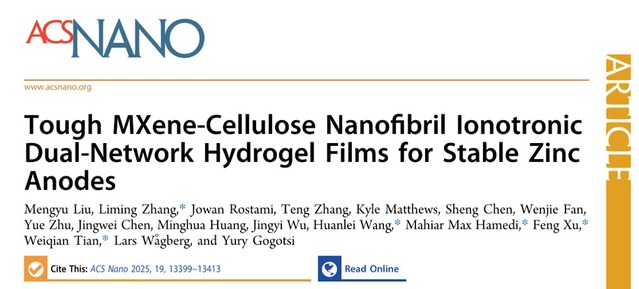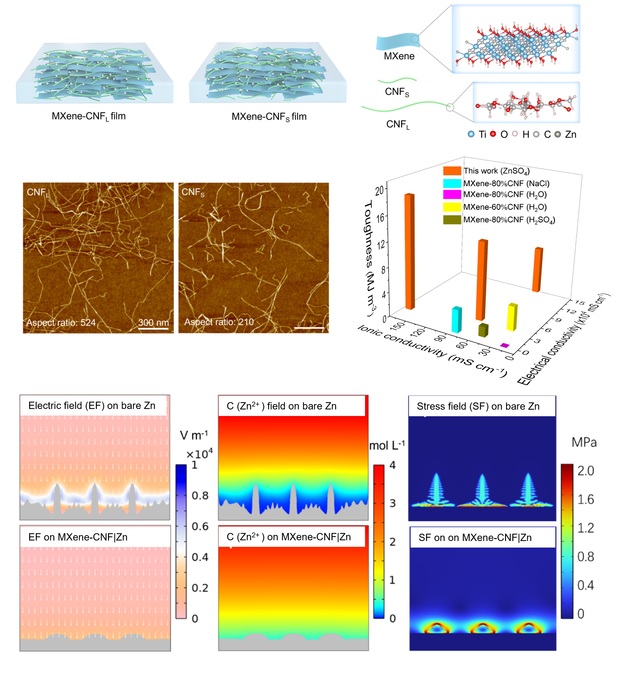The research team led by Professor Tian Weiqian at the School of Materials Science and Engineering has developed a novel nanocellulose-based high-toughness ionotronic dual-conductive hydrogel film, applied as an interfacial layer to stabilize zinc anodes in zinc-ion batteries. The findings were published in the prestigious interdisciplinary nanojournal ACS Nano with the title Tough MXene-Cellulose Nanofibril Ionotronic Dual-Network Hydrogel Films for Stable Zinc Anodes. Ocean University of China is the first affiliation, with Professors Tian Weiqian and Wang Huanlei as corresponding authors, and Liu Mengyu (2022 Master’s student in Materials Engineering) as the first author.

Paper Title and Publication Details
This study designed and constructed an MXene-CNF-based tough ionotronic dual-conductive hydrogel film with in-plane toughness up to 18.39 MJ·m⁻³, in-plane/out-of-plane Young's moduli of 0.85 GPa and 3.65 GPa respectively, and ionic/electronic conductivities of 0.52 mS·cm⁻¹/1.53 S·cm⁻¹; exhibiting high Zn²⁺ binding energy (1.33 eV) and low migration energy barrier (0.24 eV) that effectively promote uniform Zn²⁺ deposition. Results demonstrate that the strong mechanical-ionic-electronic coupling properties of this hydrogel film synergistically regulate stress field-ion field-electron field distribution on zinc anode surfaces, significantly inhibiting zinc dendrite growth and enhancing cycling stability of full zinc-ion batteries.

Nanocellulose-Based Tough Ionotronic Dual-Conductive Hydrogel Film and Its Application Analysis
This research represents a new advancement by Professor Tian Weiqian's group, building upon prior international collaborations with Sweden's Royal Institute of Technology (KTH) and Drexel University (USA) in the field of nanocellulose-based tough ionotronic dual-conductive hydrogel films (as published in Advanced Materials 2023, *35*, 2301163, with Ocean University of China as the corresponding institution). The series of research projects received funding support from the Shandong Taishan Scholars Young Experts Program, the National Natural Science Foundation of China (Youth Program), the Shandong Natural Science Foundation Excellent Youth Fund (Overseas), and the Ocean University of China Young Talents Project.
Text/Figures: Liu Mengyu
Related links:
https://doi.org/10.1021/acsnano.5c01497
https://mse.ouc.edu.cn/2022/0110/c32460a495303/page.htm


